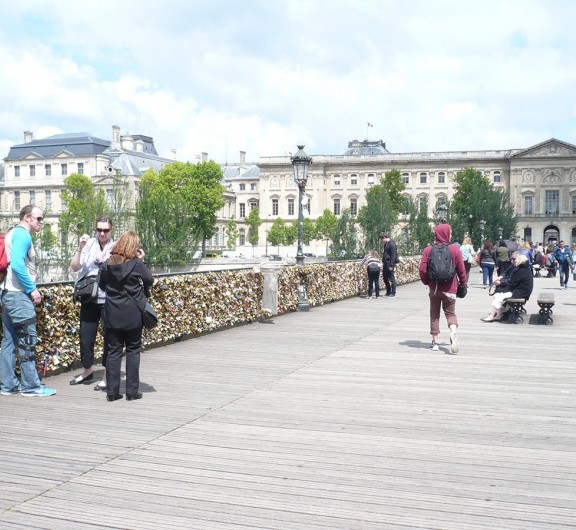Paris catacomb carvingsFrançois Décure (known as Beauséjour)
About the Artist/Site
The fabled city of Paris is underlain by almost two hundred miles of tunnels, hacked out from the limestone that workers quarried to mine the very building blocks of the city. Begun in Roman times, the labyrinthine excavations continued until the late 18th century, by which time the subterranean levels beneath the city had become so perforated that sink holes began to form. At the same time, the city of Paris closed the increasingly crowded (and odoriferous) above-ground cemeteries and began relocating the remains below. This process primarily took place between 1787 and 1799, although some bones were still being placed there as late as 1859. Many of the bones have been artfully arranged in curious assemblages; it is estimated that some six million former Parisians’ bones rest here.
A quarryman named François Décure, working between 1777 and 1782, sculpted an alter used for the blessing of the bones and also a footbath for the workers. Prior to his work below Paris, however, he had served in Louis XV’s armies during the Seven Years War (1756-1763) and had been held captive by the English at the Port-Mahon fortress located in the major city of the Spanish island of Menorca. But within a small room off the tunnel now known as the Port-Mahon corridor, he also spent five years secretly carving a small group of sculptures, doing so during lunch breaks and after or before his work shifts. He worked with the simple tools of his quarryman’s trade, lighting his work with torches.
The Port-Mahon corridor is so named because of Décure’s sculpture depicting that fort. There are also sculptures depicting Port Philipe [sic} and the Quartier de Cazerne, the most detailed of the three. The depictions were carved from memory, and, as his residence in the Port Mahon prison, for example, had taken place at least fifteen years earlier, they reflect considerable artistic license. Yet they are fairly complex – the port city, for example, is roughly 40 feet long, and built perfectly so that the natural water that pools within the catacombs comes up to the correct level at the edge of the city. There are both bas-relief and protruding elements in each of these sculptures.
Décure was crushed during a cave-in that occurred while he was carving a separate stairway that would have allowed easier access to his sculptures from street level. He never recovered. While there has been damage over the years to the works, including during the Revolution, they were conserved in 1854 and several times thereafter, and are now available for viewing as part of the Catacombs tour offered to members of the public.
~Jo Farb Hernández, 2017
Contributors
Map & Site Information
1 Avenue du Colonel Henri Rol-Tanguy
Paris, Île-de-France, 75014
fr
Latitude/Longitude: 48.8338325 / 2.3324228
Extant
1 Avenue du Colonel Henri Rol-Tanguy, Paris, Île-de-France, 75014, France
Available for viewing as part of the Catacombs tour offered to members of the public
Nearby Environments









Post your comment
Comments
No one has commented on this page yet.